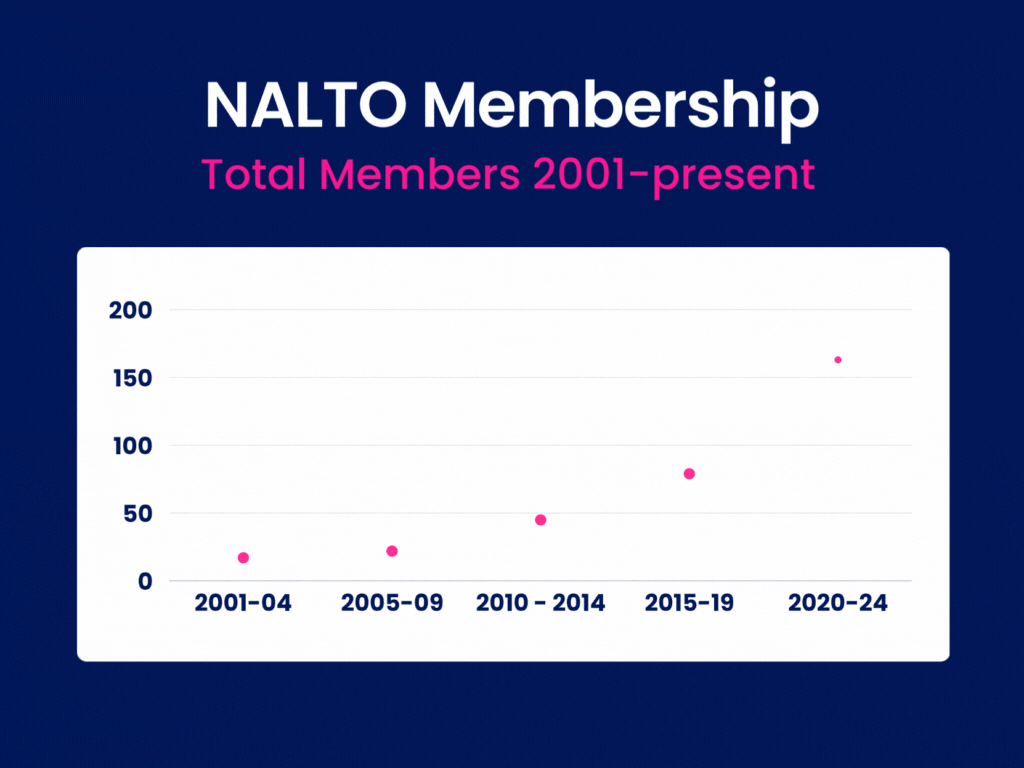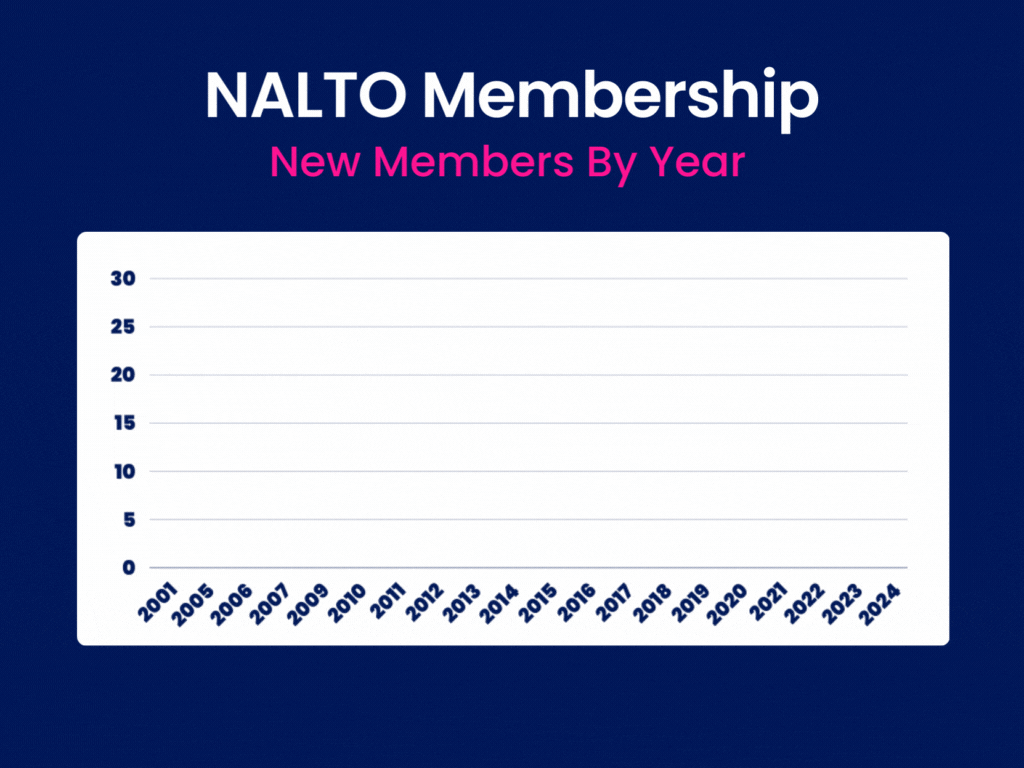In the wake of the infamous 2001 attack on American soil, a critical gathering took place.
Not in the hallowed halls of political power, nor amidst the cacophony of a war room, but in the relative anonymity of a modest conference room at Hartsfield-Jackson Atlanta International Airport. There, some 20 locum tenens visionaries convened to save an industry that seemed to be teetering on the brink of collapse.
While the outside world dealt with shock and uncertainty, this collection of competitors was quietly laying the framework for what would become a beacon of integrity and ethical business practice in the turbulent healthcare staffing industry.
Preface: Challenges Facing the Locum Tenens Industry
The origins of locum tenens trace back to 1979, when Dr. Therus Kolff and Dr. Alan Kronhaus founded the first locum tenens staffing agency, CompHealth.
Their innovative approach was a continuation of the University of Utah’s Health Systems Research Institute, which aimed to attract physicians to rural communities. The groundwork laid by these pioneers, and later by Dr. Ken Teufel, founder of what became Interim Physicians, paved the way for the industry’s steady expansion throughout the 1980s and 1990s.
As demand for physicians grew nationwide amid widening clinician shortages, the locum tenens market expanded rapidly, drawing numerous competitors into the fray. With this expansion came an increased need for malpractice coverage, exposing the industry’s vulnerable underside.
At the dawn of the new millennium, the locum tenens industry, despite its impressive growth over two decades, found itself on shaky ground, facing significant challenges threatening its very existence.
For the prior two decades, the locum tenens industry experienced a significant escalation in malpractice insurance premiums, putting a considerable strain on what was, at the time, just a small niche in the perm placement healthcare staffing space.
 “It’s hard to imagine now, but permanent placement had always been the more prestigious industry,” said Patrick Donovan, founder of Linde Healthcare in 1994 and current partner/owner at VeloSource. “It’s funny because of how much locum tenens has grown into this relatively huge segment—$7.5 billion in 2023—but it was not like that in 2001.”
“It’s hard to imagine now, but permanent placement had always been the more prestigious industry,” said Patrick Donovan, founder of Linde Healthcare in 1994 and current partner/owner at VeloSource. “It’s funny because of how much locum tenens has grown into this relatively huge segment—$7.5 billion in 2023—but it was not like that in 2001.”
Donovan explained how insurers—whether warranted or not—perceived locum tenens providers as a higher risk for malpractice claims due to the misguided belief that these doctors had opted for temporary gigs because they couldn’t land full-time hospital jobs.
“There was a misunderstanding by the insurance suppliers that locum tenens was a higher risk even though there was nothing to support this,” said Donovan. “We actually did studies that showed locums are less risky than general doctors. As an agency, we adopted this policy that we can’t put high-risk doctors to work. You have to screen the physician, and prior behavior is likely going to be the future indicator of outcome.”
 John Daniel, founder of physician staffing firm Daniel & Yeager in 1989, TeamHealth in 1993, and current executive vice president of VeloSource, also felt the mounting anxiety.
John Daniel, founder of physician staffing firm Daniel & Yeager in 1989, TeamHealth in 1993, and current executive vice president of VeloSource, also felt the mounting anxiety.
“The malpractice market didn’t suffer necessarily because of any one incident, but if there were a few claims here and there, insurers started to question what types of providers we were putting to work,” Daniel said.
 In addition to the financial challenges, some agencies had engaged in unethical practices, taking advantage of the soaring demand for temporary physicians. Don DeCamp, former chief operating officer of CompHealth and later chief people officer at CHG Healthcare, recalled a startling conversation with an unnamed locum tenens agency member who balked at the idea of performing full background checks on providers.
In addition to the financial challenges, some agencies had engaged in unethical practices, taking advantage of the soaring demand for temporary physicians. Don DeCamp, former chief operating officer of CompHealth and later chief people officer at CHG Healthcare, recalled a startling conversation with an unnamed locum tenens agency member who balked at the idea of performing full background checks on providers.
“The topic of checking references came up, and she says to me, ‘Oh, well, you guys at CHG are big time,” he recalled. “How can you possibly expect us to check all of our doctors’ references? And I was shocked. I turned to her and said, ‘You mean to tell me you don’t check your doctors’ references?’”
Part 1: A Team of Rivals
 Agency executives realized they needed a unified body to set ethical standards before outside entities imposed potentially unfavorable and restrictive regulations. During a breakout session at the 1999 National Association of Physician Recruiters (NAPR) convention in San Diego, agency execs, including Jamey Morgan, CEO of Concorde Staff Source, DeCamp, Daniel, and others working in locum tenens began discussing the idea of an industry association of their own.
Agency executives realized they needed a unified body to set ethical standards before outside entities imposed potentially unfavorable and restrictive regulations. During a breakout session at the 1999 National Association of Physician Recruiters (NAPR) convention in San Diego, agency execs, including Jamey Morgan, CEO of Concorde Staff Source, DeCamp, Daniel, and others working in locum tenens began discussing the idea of an industry association of their own.
NAPR is a healthcare recruiting association that has long embraced recruiters in all types of organizations—permanent and locum tenens firms, management companies, and healthcare organizations. Through its code of ethics, NAPR upholds rigorous standards, guiding organizations in their commitments to clients, clinicians, and the broader public. Daniel, who served on the NAPR ethics committee, and then as its president in ’97 and ’98, said they didn’t specifically address locums issues.
That conversation culminated in a crucial meeting in Atlanta in early October 2001. There, industry pioneers laid the groundwork for what would soon become known as the National Association of Locum Tenens Organizations. The atmosphere in the room was tense, as many attendees were wary of opening themselves up to their competitors. But as discussions unfolded and the leaders got to know each other, it became clear they shared the same challenges.
During that first meeting, the outlines of NALTO’s future image started to materialize. Much like America’s Founding Fathers 200 years earlier, a new steering committee began hammering out the structure of NALTO, agreeing to elect a board of directors and establishing a code of ethics that would guide the industry.
So, what came next? We’ll come back to that shortly. For now, let’s look at how the industry found itself in this predicament in the first place.
The transient nature of locum tenens work, where providers frequently moved between healthcare facilities, made it challenging for insurers to assess risk accurately. Daniel described the erratic nature of the insurance market—the number of available insurers dwindled to just two or three, making it nearly impossible for many agencies to secure coverage.
“That challenge gets amplified when an insurance provider is writing policies for locum tenens firms, and they want to insure 500 providers across multiple states,” Daniel explained. “That overwhelms underwriters and sends them over the edge to where they just stop writing them altogether.”
While some agencies prioritized rigorous vetting processes, not all staffing firms shared the same commitment to quality. In the years before the formation of NALTO, some agencies, driven by the rush to capitalize on the high demand for temporary physicians, bypassed these processes, sacrificing transparency in recruiting. This led to mismatches between practitioners’ qualifications and the needs of healthcare facilities, ultimately compromising patient care and tarnishing the reputation of locum tenens.
 Katie Hoffman-Abby, former chief operating officer and president of Vista Staffing Solutions, recalled how those sketchy practices might cause irreparable harm.
Katie Hoffman-Abby, former chief operating officer and president of Vista Staffing Solutions, recalled how those sketchy practices might cause irreparable harm.
“We wanted to make sure that any physician you put out was a doctor you felt comfortable sending your mother, husband, or friend to see,” she said. “We realized that a single company putting out bad physicians and hurting people could potentially end up destroying the industry.”
By the late 1990s, “We knew we had to set ethical standards that companies could use to distinguish themselves by meeting these minimum expectations,” Hoffman-Abby said. “This would help us identify those doing a good job and weed out the bad actors.”
The idea percolated for another two years.
Part 2: From Competitors to Collaborators
What do you get when 20 locum tenens staffing executives walk into a room? It might sound like the setup for a bad joke, but in October 2001, it was anything but.
The meeting was born out of a handful of chance encounters at earlier NAPR conferences, where several core founding members admitted they were each dealing with similar challenges. From there, this team compiled a list of the largest agencies, sent out invitations, coordinated schedules, and set the stage for the gathering in Atlanta.
As the meeting was called to order, a sense of unease permeated the airport conference room. For many attendees, this had been the first time they had come face to face with their competitors.
Once the floor opened for discussion, Morgan said people began sharing their provider insurance woes. They compared rates, swapped notes, and brainstormed strategies to leverage the collective power of multiple agencies for better prices.
“We had all the big players there,” she said. “My company was midsized at the time, and it was incredibly beneficial for us to be there and participate in these conversations.”
DeCamp came from the IT staffing world but said, “I felt like a relative newcomer to locums. The meeting was eye-opening and I quickly learned that the commonalities among these business owners far outweighed their differences.” His fresh perspective and decades of experience in other staffing segments allowed him to approach the unique challenges of locum tenens with creative solutions that had previously worked well.
“At that time, I think there were only a handful of doctors and facilities that truly understood the value of locum tenens providers,” DeCamp said. “That bothered me. It was another reason I wanted to bring these people together. This was a room full of potential. I knew there was more that could be done to show the industry’s value.”
As the day progressed, the previously tense environment began to mellow. They were no longer adversaries representing Company X and Company Y. They had united to secure affordable malpractice coverage and tackle the unethical business practices that threatened to tank the industry and undermine what they had all worked so hard to build.
The spirit of camaraderie was palpable. According to Donovan, the first meeting was laser-focused on sharing information and best practices.
“No one held back information for fear of losing an advantage over someone else,” Donovan said. “We openly shared best practices for hiring, risk management, and credentialing. We also discussed our revenue and insurance costs.”
Donovan suggested that if all the agencies could agree on a clear code of ethics and set guidelines for business practices, they could collectively ensure that only qualified locum providers were sent on assignments. Lowering the risk associated with hiring locums could lead to lower insurance rates and attract more policy underwriters—ultimately easing the financial pressures on locum agencies.
DeCamp acknowledged that the meeting’s key accomplishment was simply getting everyone in the same room for the first time. Once seated around the table, the vision for NALTO quickly came into focus.
“We were all kind of surprised by how much we all ended up liking each other,” Donovan said, laughing. “Most of us were business owner-operators, and I ended up making many good friends during that first meeting.”
One of those friends was John Daniel, who would later join Donovan at VeloSource some 20 years later.
“After that meeting in the airport lounge, I think we ended up piggybacking with NAPR or Staffing Industry Analysts a couple more times to meet and finalize the structure,” Donovan said.
Each agency made a financial commitment to keep the ball rolling, primarily to trademark the NALTO name and hire the same company that managed NAPR. The next step involved forming an ethics committee, where Daniel played a crucial role in drafting the first NALTO code of ethics, drawing on his prior experience from the NAPR ethics committee.
“We essentially modeled it after NAPR, but we created content appropriate for locums companies,” Daniel explained.
That first draft of the NALTO code of ethics has largely remained the same today, Daniel said, adding that it was originally seven pages and has expanded at least three different times over the years. It’s now a 12-page document available on NALTO’s website, outlining simple yet fundamental rules for agencies, such as:
- Fulfilling all agreements made with clients
- Being open and honest without making promises they can’t keep
- Ensuring a signed contract with clients detailing fee conditions before submitting a CV
- Maintaining confidentiality between clients and candidates
- Accurately detailing job descriptions, compensation, and other crucial job details
- Contracting with candidates only as independent employees and documenting it appropriately for tax purposes
“We essentially said, ‘Don’t lie to clients or job candidates,’” DeCamp said. “We also set procedures for checking references for both sides because there were hospitals you didn’t want to work for and doctors you didn’t want working for you.”
The NALTO board later formed an arbitration committee to settle disputes between member agencies. While arbitration wasn’t binding, and parties may require legal representation if they couldn’t agree, the process was designed to ensure agencies remained accountable. The committee could sanction an agency, which could result in probation, suspension, or expulsion, ideally deterring future unethical behavior.
As NALTO grew, those situations became increasingly rare. The organization helped level the playing field, and agencies began to see each other not as competitors but as equals.
“It didn’t take many meetings for us to realize we were all in this together, and we were all working for the common good,” Morgan said. “These are good people; it doesn’t matter if they’re my competitors. If I have an issue, I can just pick up the phone and call them, and we can work it out on our own.”
Today, membership in NALTO is a virtual stamp of approval within the industry. It signifies that a locum tenens agency holds itself to the highest standards—a testament to the collaborative spirit that was born in that Atlanta airport lounge.

Part 3: Breaking on Through to the Other Side
In the early 2000s, the locum tenens industry struggled to gain traction in an unfamiliar market. Their first meeting in Atlanta helped eliminate negative perceptions, raising locum tenens to one of the most successful and consistently growing segments of healthcare staffing over the past two decades. By enforcing moral standards and fostering a culture of transparency, NALTO’s founders succeeded in building a basis of trust among candidates, clients, and other staffing agencies.
“In my mind’s eye, we had this industry that was needed and viable, but people just didn’t trust it because they didn’t understand it,” said DeCamp. “NALTO was built to help sell the value of the industry.”
From its founding, NALTO served as a springboard, propelling locum tenens into the public eye as a credible and appealing career option for physicians and advanced practice providers at all stages of their careers.
“We sold it hard to clients and candidates that if you were going to use a locum tenens company, you better make sure they’re a NALTO member,” DeCamp added. “NALTO’s establishment was a pivotal moment that rescued the locum tenens industry from its malpractice crisis, generated significant revenue for companies and providers, and paved the way for its current success,” said DeCamp.
The effect of NALTO extends beyond financial gains, also fostering lifelong friendships and business partnerships.
“Helping create this organization has been the best thing for my career,” Donovan shared. “I made so many great friends through that first meeting and the conferences that have followed. In those days, we were all trying to establish ourselves through good quality management, and we learned that if we could just work together and get the whole boat to float higher, everything was going to turn out great for the industry.”
Between 2001 and 2004, NALTO welcomed its first 17 member agencies, all of which immediately gained “active” member status.
Active members (see Article IV, Page 2 of NALTO’s bylaws) are locum tenens businesses that have been operating for more than a year and derive at least half of their gross revenue from locum tenens placements. These members can hold positions on the board and vote on changes to the bylaws or code of ethics.
In late 2005, the organization expanded its membership to include both affiliate and vendor members.
Unlike active members, these groups cannot vote on NALTO-specific policies during regular meetings. Affiliates, as defined in NALTO’s bylaws, are agencies with a vested interest in the locum tenens industry that don’t meet the criteria for active membership.
Vendor members, on the other hand, are businesses that provide services or products to locum tenens organizations—like Locumpedia, which has been a proud NALTO vendor member since 2020. Vendors enjoy benefits such as discounts on booth space at conventions and prominent ad space in newsletters.
Additionally, there’s a “life” membership distinction for members who have been in good standing with the association for 10 years or more and have retired from regular employment. Life members can attend conventions at the member rate and enjoy all the same benefits as their active counterparts, except hold a board or officer position. Over the past two decades, through these expansions, NALTO has grown from its core group to include more than 160 different members.

NALTO’s commitment to fostering collaboration and continuous improvement is embodied in its annual Fall Fly-In, named in honor of the inaugural meeting that formed the bedrock of the organization more than 20 years ago. These events have become invaluable opportunities for industry authorities to network, share experiences, and engage in meaningful discussions that support the growth and sustainability of their agencies.
Each Fall Fly-In incorporates business meetings to discuss legislative changes, advocacy efforts, and updates to NALTO’s bylaws and policies. The 2024 Fall Fly-In will be held September 24-25 in Austin, Texas. This year’s event will strive to build on last year’s record-setting success in Park City, Utah, which attracted over 180 locum tenens industry leaders, agency representatives, vendors, clients, and providers.
In addition to the Fall Fly-In, NALTO collaborates with NAPR to host an annual split convention, offering prime opportunities for the locum tenens industry to market itself to new and prospective members, providers, and healthcare vendors.
“The population that attends these NALTO meetings now is a lot of different people,” noted Donovan. “It used to be mainly an owner-operator association, but we added educational aspects to the conference. It’s become more inclusive to a lot more people involved in the industry.”

By reducing obstacles, primarily through the establishment of a unified code of conduct, NALTO has made it easier for providers, recruiters, and facilities to enter into the locum tenens industry.
“It’s just a great business model,” said Hoffman-Abby. “NALTO didn’t make us less competitive; it just vastly improved the quality of the services that the industry provided.”
The upshots of these efforts are evident. According to CHG’s 2023 State of Locum Tenens Report, 70% of physicians now have a favorable impression of locum tenens. Recruiters and health system professionals have similarly positive views, acknowledging the value that locum providers bring to healthcare facilities.
Today, healthcare facilities are increasingly dependent on locum tenens providers to fill gaps where permanent physicians cannot. CHG’s 2024 report shows that locum providers are not only helping to meet rising patient demand but are also essential in supplementing permanent staff.
While the industry continues to face challenges, such as staffing shortages and concerns about the independent status of providers, NALTO members are committed to addressing these issues head-on. The association has created a public platform where concerns can be discussed openly and potential solutions can be explored collaboratively.
As locum tenens continues to expand within the healthcare staffing space, NALTO’s legacy stands as a testament to the power of collaboration and shared vision. The collective efforts of a few bold entrepreneurs provided simple solutions that helped grow locum tenens into one of the most successful healthcare staffing segments of the last 20 years.








